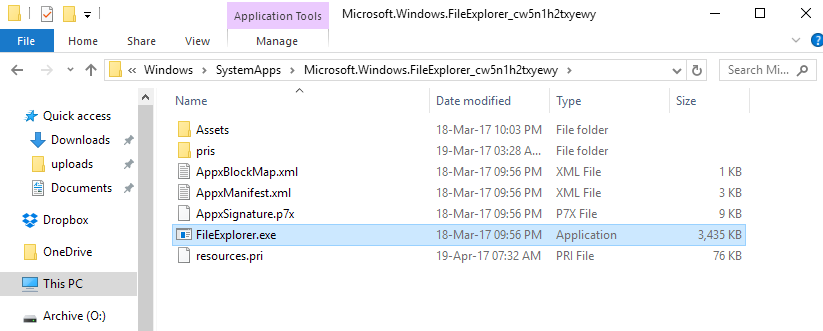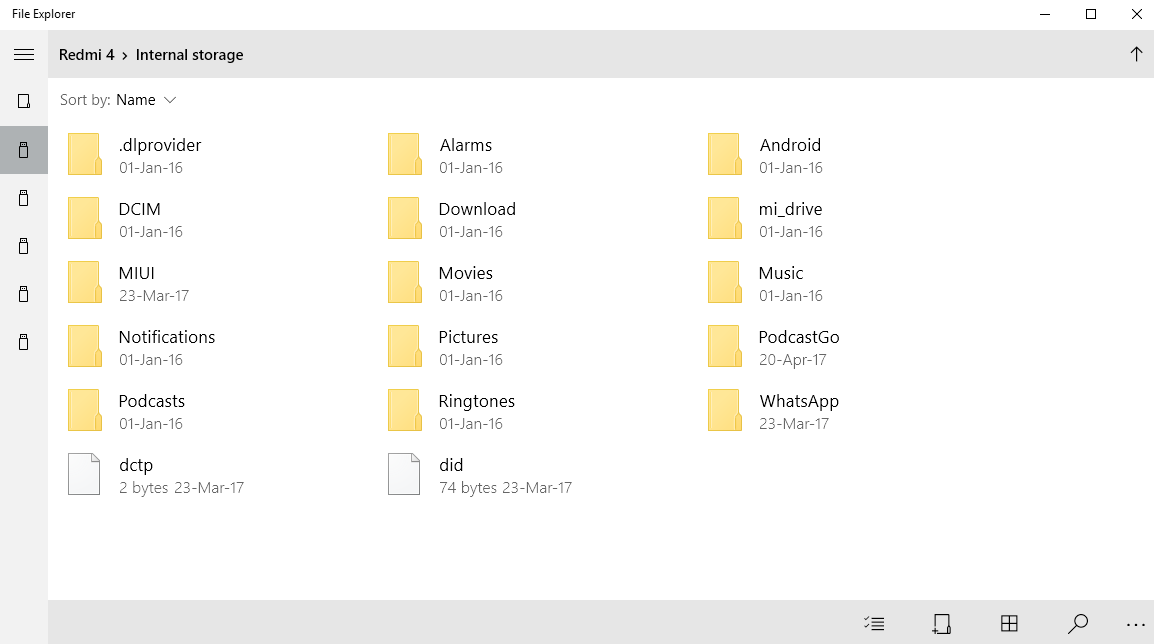Windows 10: load the touch-optimized File Explorer
File Explorer is the default file browser on Windows 10. It is more or less a renamed Windows Explorer, as it looks and behaves pretty much like the decade old file browser.
The new File Explorer is launched on desktop PCs and notebooks that run Windows 10. That's usually not a problem unless you happen to use a touch-enabled interface, and work without mouse regularly or occasionally.
Recent versions of the Windows 10 operating system ship with a touch-optimized File Explorer that you may run in these situations.
If you are very observant when it comes to Windows updates, you may have noticed the new FileExplorer.exe application already under System Apps.
You find it under C:\Windows\SystemApps\Microsoft.Windows.FileExplorer_cw5n1h2txyewy right now if you have an up to date Windows 10 installation.

Problem is, you cannot start the program with a double-click. Nothing happens when you try to run the program this way.
Load the touch-optimized File Explorer

You may load the touch-optimized version of File Explorer, but need to use the following method instead to do so. You will create a shortcut on your device that you may activate whenever you need to launch the touch File Explorer on your Windows 10 device.
- Right-click on a free spot on a desktop, or in any other location in File Explorer, and select New > Shortcut from the context menu.
- Add the following as the target: explorer shell:AppsFolder\c5e2524a-ea46-4f67-841f-6a9465d9d515_cw5n1h2txyewy!App and click on the next button afterwards.
- Name the new shortcut in the last step.
You may launch the touch version of File Explorer afterwards.
Note: The most likely reason why it is not enabled yet is that it is not done yet. There is also a chance that Microsoft will pull the application from the operating system at a later point in time.
The touch-optimized version of File Explorer does away with most interface elements that are part of the regular Explorer. Folders and files are larger, and navigation has been optimized for touch input.
You can use the File Explorer application with mouse and keyboard, and it works well, but you may miss functionality that the regular version supports. Most of the basic functionality is there: you can create folders, delete files, move and rename files, or run searches. You can switch between storage locations, select multiple files or folders at once, and display basic file properties such as the number of files or folders on a drive, and the total size of it.
Other features are not supported. There is no cutting, no file creation, no entering of a path or location directly, no option to access file sync services directly, or options to access locations quickly.
Closing Words
Microsoft's work on the new File Explorer for touch devices will continue, and there is a possibility that this version will become the standard on touch-devices in the future. The bare bones nature of that version makes it less likely that Microsoft will replace the desktop File Explorer version with it as well.
Now You: What's your take on this new File Explorer version?
This article was first seen on ComTek's "TekBits" Technology News

- Log in to post comments